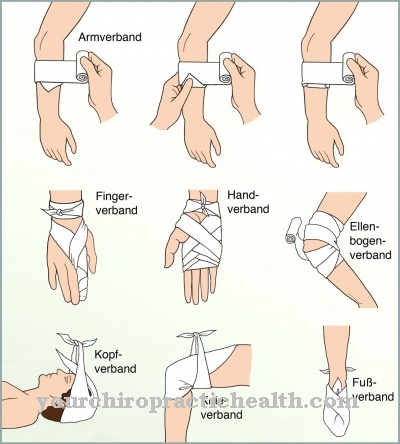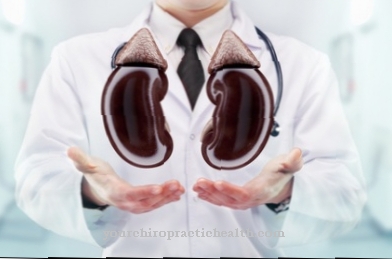Most women spend the first few weeks after the arrival of a new human being taking care of their newborn baby.
Many new mothers also worry about how to get their beautiful figure back as quickly as possible. What is important, however, is that Postnatal exercise not to be neglected, as this can lead to long-term effects such as uterine subsidence and urine and fecal incontinence.
What is postnatal gymnastics?

Postnatal exercises include specific exercises for women who have given birth some time before. They are usually carried out by midwives, physiotherapists and fitness studios. The exercises serve to strengthen the pelvic floor muscles, which were heavily used and stretched during pregnancy and the birth process.
When the new mother can take such a guided course depends on the extent of the birth injury and whether she gave birth normally or by caesarean section. At your routine medical examination six weeks after the delivery, you can find out when is the right time for you to start the special gymnastics for exercising the pelvic floor. Most young mothers begin their first light postnatal exercise 6 to 8 weeks after their baby is born. A different period applies to a caesarean section.
Function, effect & goals
Regression means that the body returns the changes that caused the pregnancy to the state that existed before the pregnancy.
The pelvic floor muscles, abdominal wall, uterus, vaginal canal and hormonal balance are adjusted within the nine months following delivery so that the pelvic floor optimally supports the function of the back muscles, organs, arms and shoulders: the abdominal muscles shorten, the uterus forms back to their normal size and the tissue becomes firmer again, as pregnancy hormones are no longer released. Usually this process takes about 9 months. However, it depends on individual factors such as age, bones, muscles and connective tissue structure.
Postural gymnastics can help with this natural process and support it effectively. It ensures that there is no longer any accidental loss of urine when lifting, coughing and sneezing and that the woman no longer has to empty her bladder as often.
Postnatal exercises also reduce pain in the abdomen, back, neck and shoulder and make the pelvic floor more flexible. The feeling of being physically weak goes down. Depending on which exercises are already allowed, a distinction is made between very light exercises that can be carried out in childbed and more strenuous ones.
Shortly after the birth, it is sufficient for the person affected to sit up straight, stand upright or walk straight - this brings the back into a normal position and stabilizes the posture. It is important that no movements are made that cause pain or overexertion. If the attending gynecologist has given his consent, the actual postnatal gymnastics can begin. To begin with, it is advisable not to exercise more than 2 to 3 times a week for a maximum of 10 minutes. One of the basic exercises looks like this: The young mother carefully pulls in her stomach, slowly counts to five and then slowly lets go of the abdominal muscles.
The light abdominal training can be done in between, even while standing in line at the supermarket. It is best to do it about 100 times a day and gradually increase to 300 exercises. If the abdominal muscles get tired or start to hurt, a break should be taken. About two and a half months after the birth of the child, the woman can then do 30 minutes of postnatal exercise every day and also do sports such as walking, jogging and swimming. Cardiovascular training such as fast walking and inline skating also support the regression.
But even then, it still applies that she must never overstrain herself. Postnatal exercises train the pelvic floor muscles and promote blood circulation in the abdomen. This prevents complications such as delayed healing or scarring of the perineal incision.
You can find your medication here
➔ Medicines for bladder and urinary tract healthRisks, side effects & dangers
Postural gymnastics should always be approached slowly, even if the young mother wants to achieve her previous figure as quickly as possible. If it is started too early, there is a risk of painful pelvic displacement.
Women who have given birth with the help of a caesarean section are not allowed to do any exercises in the first six months that put a lot of strain on the abdominal muscles. In addition, the young mother should avoid all sports that involve jerky movements. Only swimming is allowed (with prior permission from the attending physician!). But even with this sport, it is important that there is no overexertion. With a caesarean section, the birth canal is not stretched as much as with a natural birth.
However, this does not apply to the abdominal muscles: They are pulled apart a great deal during pregnancy so that the child can grow in the womb. After a caesarean section, the scar on the abdomen can lead to severe mobility restrictions in the beginning. Sometimes the young mother cannot even sit up without help after the birth. If she starts postnatal gymnastics too early, it can lead to hernias and micro-tears on the abdominal muscles, which can later cause considerable physical problems.
















.jpg)
.jpg)



.jpg)






